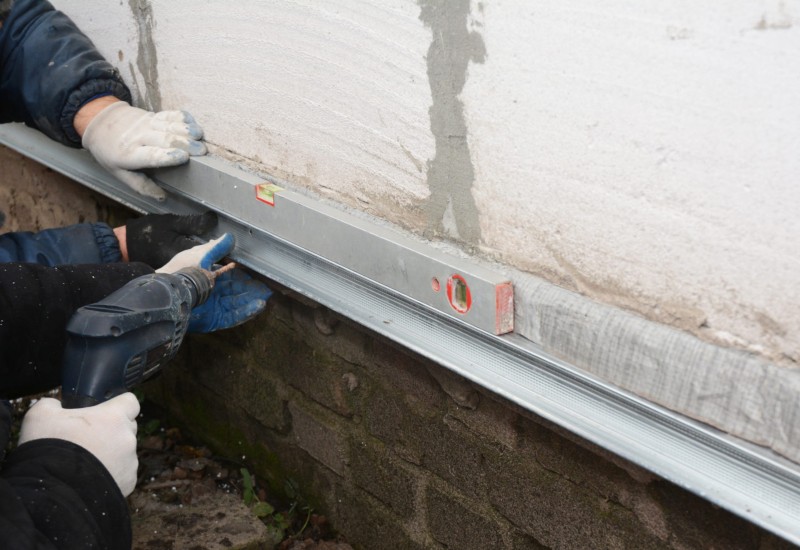Business
Understanding Foundation Repair: Causes, Signs, and Solutions
Published
2 months agoon
By
Prime Star
The structural integrity of any building begins with its foundation. Whether you’re dealing with a residential property or a commercial space, a strong foundation ensures safety, stability, and longevity. Over time, however, various factors can lead to damage, prompting the need for foundation repair.
Knowing the early signs, understanding the causes, and exploring the right solutions can save you from major financial and structural setbacks. In this comprehensive guide, we’ll dive deep into everything you need to know about foundation issues and how to approach fixing them.
Why Your Foundation Matters
The foundation of a building serves several critical roles:
- Load distribution: It evenly distributes the weight of the building to the soil below.
- Structural support: It anchors the structure and prevents settling or shifting.
- Moisture barrier: It keeps groundwater and moisture from seeping into the building.
- Insulation: It contributes to energy efficiency by insulating against temperature extremes.
When your foundation is compromised, so is the entire structure. That’s why it’s vital to take any signs of damage seriously.
Common Causes of Foundation Damage
Foundation problems don’t appear out of nowhere. They are usually the result of one or more underlying issues that develop over time. Here are some of the most frequent culprits:
1. Soil Movement
Different types of soil expand or shrink depending on moisture content. Expansive clay, for example, swells when wet and shrinks when dry, putting stress on the foundation over time.
2. Poor Drainage
If water isn’t properly diverted away from your property, it can accumulate around the foundation, leading to erosion, shifting, or hydrostatic pressure against the foundation walls.
3. Plumbing Leaks
Underground plumbing leaks can saturate the soil beneath a structure, softening it and causing parts of the foundation to sink or shift.
4. Tree Roots
Large trees planted too close to a building can cause foundation issues in two ways: roots may grow under the foundation and cause it to lift, or they may absorb moisture, causing soil shrinkage and settling.
5. Poor Construction
Inadequate compaction of soil, subpar building materials, or shortcuts during the construction phase can lead to early foundation problems.
6. Natural Disasters
Earthquakes, floods, and extreme weather can all compromise a building’s foundation—sometimes in a matter of minutes.
Signs Your Foundation May Be in Trouble
Recognizing early warning signs can help you catch foundation issues before they become severe. Look out for:
- Cracks in walls or floors: Small cracks may be normal settling, but larger or widening ones could signal structural movement.
- Sticking doors or windows: Frames that no longer open or close properly may indicate shifting.
- Uneven floors: Sloping or sagging floors can point to subsidence or heaving.
- Separation of walls from ceilings or floors: Gaps can indicate movement or settling.
- Bowed or leaning walls: Especially in basements, this could be due to soil pressure from outside.
- Moisture in crawl spaces or basements: Persistent dampness can weaken materials and promote shifting.
The Foundation Repair Process: What to Expect
Once you suspect foundation problems, it’s important to act fast—but with the right information and professionals. Here’s how the process typically works:
Step 1: Inspection
A thorough foundation inspection is essential. Professionals will evaluate visible symptoms, measure elevations across the structure, and check the condition of surrounding soil and drainage systems.
Step 2: Diagnosis
After the inspection, you’ll receive a detailed report explaining the root cause(s) of the problem, the extent of the damage, and the best course of action. Not all cracks or shifts require full-scale foundation repair—some may simply need monitoring or minor sealing.
Step 3: Repair Plan
Depending on the diagnosis, the recommended repairs may include:
- Piering or underpinning: Steel or concrete piers are driven into the ground beneath the foundation to stabilize it.
- Slabjacking (mudjacking): A grout mixture is pumped beneath a concrete slab to lift it back into place.
- Wall anchors or braces: Used to stabilize and straighten bowing walls.
- Drainage correction: Installation of French drains, sump pumps, or re-grading to redirect water away from the foundation.
- Sealants and epoxy injections: For minor cracks that don’t affect structural integrity.
Step 4: Execution
Once the plan is agreed upon, contractors begin work, typically starting with excavation (if required) and then proceeding with structural stabilization. The duration and cost of foundation repair will depend on the extent of damage and the complexity of the project.
Step 5: Monitoring and Maintenance
Even after repairs are complete, monitoring is important. Contractors may install monitoring systems or conduct follow-up inspections. Homeowners are usually advised to maintain proper drainage and landscaping to prevent future issues.
Foundation Repair Methods: A Closer Look
Let’s explore some of the most common repair techniques in more detail:
1. Steel Push Piers
These are driven deep into the soil to reach load-bearing strata and then used to lift and stabilize the foundation. They’re ideal for serious settlement issues.
2. Helical Piers
Similar to steel push piers, these are screwed into the ground rather than driven. They’re particularly useful when the soil is not ideal for push piers or for lighter structures.
3. Slabjacking (Mudjacking)
Used primarily for concrete slab foundations, this method injects a slurry beneath the slab to lift it. It’s quick and non-invasive but may not be suitable for structural foundations.
4. Carbon Fiber Reinforcement
For minor bowing or cracking walls, carbon fiber strips can be bonded to the interior of foundation walls for added strength.
5. Wall Anchors
These consist of steel plates connected by rods that pull and hold bowed walls back into place. They’re commonly used in basement wall repairs.
DIY vs. Professional Repair
While some minor cracks can be filled using store-bought products, most structural issues require professional intervention. Attempting to DIY structural repairs may not only fail to fix the problem but can also make it worse—or void your insurance or home warranty.
Professional contractors bring the right tools, knowledge, and experience to ensure that repairs are done correctly and safely. Always check for licensing, insurance, and customer reviews before hiring a contractor.
Preventing Future Foundation Problems
Prevention is always better than cure. Here are some steps you can take to reduce the risk of foundation issues:
- Ensure proper drainage: Keep gutters clean and downspouts directed away from the house.
- Water the soil during droughts: Consistent moisture levels help prevent soil shrinkage.
- Avoid planting trees too close: Large roots can disrupt soil and foundation integrity.
- Address plumbing leaks immediately: Especially those beneath the slab.
- Grade your yard: The ground should slope away from the home.
- Inspect regularly: Keep an eye out for cracks or shifting, especially after storms or droughts.
Final Thoughts
Your foundation is literally the base upon which everything else in your home depends. Ignoring warning signs or delaying necessary foundation repair can lead to escalating problems, including serious safety risks and property devaluation. By understanding the causes, recognizing the symptoms, and working with qualified professionals, you can protect your investment and your peace of mind.
If you’re noticing signs of trouble—like cracks, sloping floors, or sticking windows—it might be time to schedule an inspection. Whether it turns out to be a minor fix or a more involved project, addressing it early is always the best approach.

The Real Story of Melissa Meeks, Jeremy Meeks’ Famous Ex-Wife

MegaCustom: Personal Gifts Made Beautiful

Design Something Special with MegaCustom

Top 10 SEO Agencies for Barber Shops

The Secret to Choosing Colours That Truly Work with Your Flooring

Why Vietnam Became the Traveler’s Favorite Destination

The Story of Elijah Judd: Wynonna Judd’s Son and His Private Journey

Who Is Susan Andrews? Inside the Private Life of Tucker Carlson’s Wife

Why Hiring AWS Developers is Key for Your Cloud Strategy in 2026

Balcony Power Plant Plug-in Solar:101 Guide

Who Is Marlene Knaus? The Untold Story of Niki Lauda’s First Wife

Curious About JOI Database? Read This First Before You Click Anything

Jacqueline Bernice Mitchell: The Inspiring Story of Jerry Rice’s Ex-Wife

Should You Use Wooflix in 2025? Honest Review and Best Alternatives

Where Is Noelle Watters Now? Jesse Watters’ Ex-Wife’s Life After Divorce

Where Is Barbara Boothe Now? Inside Her Life After Larry Ellison

Alisande Ullman Today: What Happened After Her Divorce from Leslie Nielsen?

Where Is Tanya Hijazi Now?: All About Rick James’ Former Wife

Wendy Lang: Meet the Therapist Married to Cenk Uygur

Mickey Middleton: The Untold Story of Bryan Cranston’s First Wife

The Real Story of Melissa Meeks, Jeremy Meeks’ Famous Ex-Wife

MegaCustom: Personal Gifts Made Beautiful

Design Something Special with MegaCustom

Top 10 SEO Agencies for Barber Shops

The Secret to Choosing Colours That Truly Work with Your Flooring

Why Vietnam Became the Traveler’s Favorite Destination

The Story of Elijah Judd: Wynonna Judd’s Son and His Private Journey

Who Is Susan Andrews? Inside the Private Life of Tucker Carlson’s Wife

Why Hiring AWS Developers is Key for Your Cloud Strategy in 2026

Balcony Power Plant Plug-in Solar:101 Guide
Categories
Trending
-

 Celebrity6 months ago
Celebrity6 months agoWho Is Marlene Knaus? The Untold Story of Niki Lauda’s First Wife
-

 Entertainment5 months ago
Entertainment5 months agoCurious About JOI Database? Read This First Before You Click Anything
-

 Celebrity3 months ago
Celebrity3 months agoJacqueline Bernice Mitchell: The Inspiring Story of Jerry Rice’s Ex-Wife
-

 Entertainment5 months ago
Entertainment5 months agoShould You Use Wooflix in 2025? Honest Review and Best Alternatives
